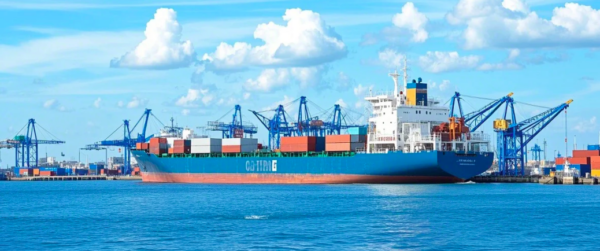Logistics plays a crucial role in ensuring the smooth flow of goods and services across industries. The different types of logistics help businesses optimize operations, reduce costs, and enhance efficiency. This article explores the key types of logistics, including inbound logistics, outbound logistics, reverse logistics, and third-party logistics. Additionally, we will define the logistics management cycle and discuss its significance.

1. Inbound Logistics
Inbound logistics focuses on the movement of raw materials, components, and supplies from suppliers to production facilities or warehouses. This type of logistics involves procurement, transportation, receiving, and inventory management. Effective inbound logistics ensures that manufacturers receive the necessary resources on time, reducing delays and production costs. Companies often work with suppliers to streamline supply chain operations and enhance efficiency.
2. Outbound Logistics
Outbound logistics is responsible for delivering finished products from manufacturing plants or warehouses to customers or retailers. This process includes order fulfillment, packaging, shipping, and distribution. Businesses aim to optimize outbound logistics to reduce delivery times, improve customer satisfaction, and lower transportation expenses. The growing demand for e-commerce has made outbound logistics even more critical, as customers expect fast and reliable deliveries.
3. Reverse Logistics
Reverse logistics deals with the return of goods from customers back to manufacturers or sellers. This process is essential for handling product returns, recycling, repairs, and disposal. Companies implement effective reverse logistics strategies to minimize waste, reduce losses, and enhance sustainability. With the rise of online shopping, reverse logistics has become an integral part of supply chain management, allowing businesses to manage product returns efficiently.
4. Third-Party Logistics (3PL)
Third-party logistics (3PL) refers to outsourcing logistics operations to specialized service providers. These companies offer warehousing, transportation, inventory management, and distribution services. Businesses often partner with 3PL providers to improve efficiency, reduce operational costs, and expand their reach in new markets. By leveraging 3PL solutions, companies can focus on their core activities while ensuring seamless logistics management.
5. Logistics Management Cycle
The logistics management cycle refers to the process of planning, executing, and controlling the movement of goods, services, and information throughout the supply chain. This cycle consists of several key stages:
- Planning– Identifying demand, sourcing suppliers, and scheduling shipments.
- Procurement– Acquiring raw materials and ensuring smooth inbound logistics.
- Warehousing & Inventory Management– Storing goods strategically to optimize space and ensure availability.
- Transportation– Moving products efficiently from suppliers to warehouses or from warehouses to customers.
- Order Fulfillment– Ensuring that customer orders are processed, packed, and shipped correctly.
- Reverse Logistics– Managing product returns, exchanges, and recycling efforts.
By optimizing each stage of the logistics management cycle, companies can improve supply chain efficiency, reduce costs, and enhance customer satisfaction.
Conclusion
Understanding the different types of logistics is essential for businesses looking to enhance supply chain efficiency and meet customer expectations. Whether managing inbound logistics, optimizing outbound logistics, implementing reverse logistics, or leveraging third-party logistics, companies must adopt effective strategies to stay competitive.
One of the companies specializing in efficient logistics management is Interfreight Logistics. With expertise in supply chain solutions, Interfreight Logistics helps businesses streamline operations, reduce transportation costs, and ensure timely deliveries.


